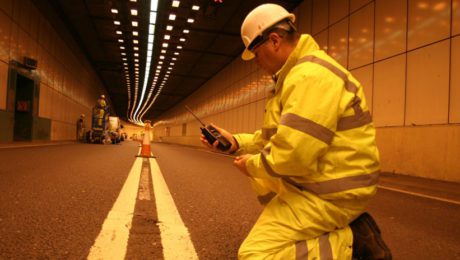What’s your emergency? Complications and delays with the Emergency Services Network (ESN)
The Emergency Services Network (ESN) is an ongoing project to create a truly next-generation communications system for the UK’s police, fire and rescue, and ambulance services. It’s going to be a unified, integrated Long-Term Evolution (LTE) network that can carry critical data applications and broadband services as well as voice communications, and will be more resilient, reliable and secure than the current, disparate networks. It will enable the three emergency services to communicate and collaborate with each other, ultimately working more effectively and saving more lives. In short, it is intended to carry the UK’s emergency services into the future.
- Published in LTE
Critical communications: what does 2018 hold?
January is a month for fresh starts, and looking to the year ahead. With this in mind what will the coming twelve months hold for the world of critical communications? Here are our key ideas…
- Published in Unified Communications
Tackling critical communications in confined spaces
When implementing a unified critical communications network in any environment, there are always issues and challenges to be overcome. However, when implementing one in a confined space those challenges are augmented, and an entirely new set of difficulties is presented.
Developing a comprehensive communications network that can perform in adverse environments such as road or rail tunnels, or more industrial settings such as mines is not only important to delivering operational success either. Having reliable communications infrastructure in place is a must in order to ensure the safety of any members of staff or the public who may be using the space too. Operators need systems and technologies that can withstand challenging conditions and provide reliable and safe links for those in the confined environment.
- Published in Professional Mobile Radio
Going underground
One of the UK’s biggest engineering projects marked a major milestone in October, as it was revealed that an Elizabeth line train has been hauled through the Crossrail tunnel for the very first time.
Crossrail is set to increase the rail capacity in central London by 10%, and is expected to carry around 200 million passengers a year when fully open. Its main feature is 13 miles of new twin tunnels, right through central London.
- Published in Transportation
A taste of the future: what Apple can teach us about LTE
Have you got an Apple Watch yet? The third iteration of the device was recently launched – and, as outlined here, it comes with one very distinctive new feature – LTE connectivity.
The jury is still out as to whether this is a game-changing development for the Apple Watch or just a nice-to-have, and regardless of how it ends up positioning Apple in the marketplace, it’s certainly had some technical difficulties to iron out.
- Published in LTE
Testing the age of LTE
The LTE era moved a little closer this month, with the first interoperability tests for mission-critical LTE scheduled to take place at the ETSI headquarters in France.
What does this mean in practice? LTE stands for Long Term Evolution. It’s a next generation standard for mobile communications, the latest iteration of an evolution that started with the analogue 1G standard in the 1980s. LTE increases both the speed and latency of wireless communications, which in turn increases reliability, clarity and mobility, with the opportunity to add more data-rich applications to communications networks.
- Published in LTE





